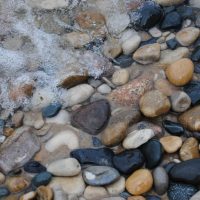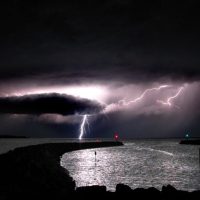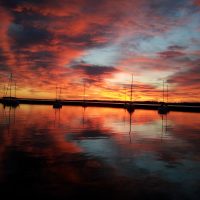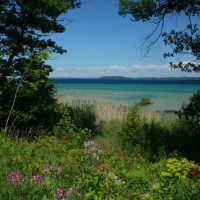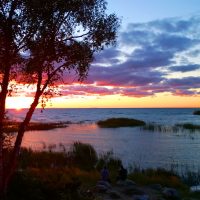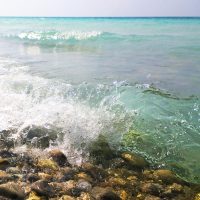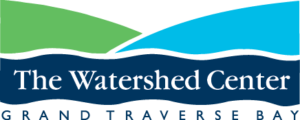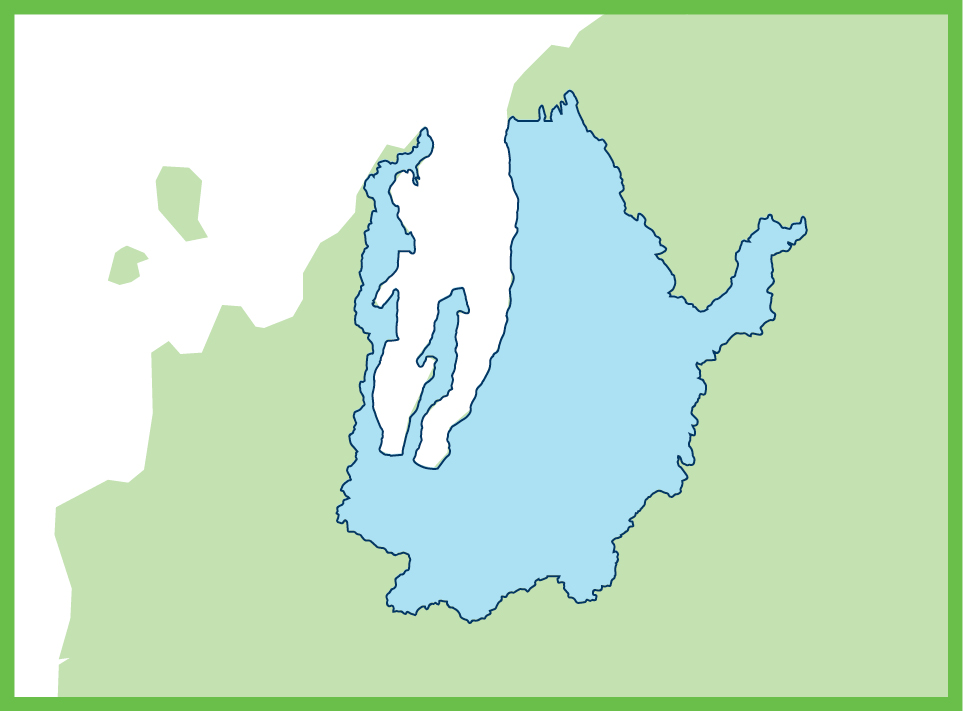Grand Traverse
Bay Watershed
Photo Credit: Peter Forton
Safeguarding the beautiful waters of our region.
The Grand Traverse Bay watershed is in northwest Michigan’s lower peninsula and drains approximately 976 square miles of land. The watershed covers major portions of Antrim, Grand Traverse, Kalkaska, and Leelanau counties, encompassing 55 townships and municipalities. The largest municipality in the watershed is the City of Traverse City. Other towns and villages in the watershed include Northport, Suttons Bay, Kingsley, Acme, Kalkaska, Mancelona, Bellaire, and Elk Rapids.
The watershed may be broken up into nine distinctive major drainage basins, referred to as subwatersheds. These subwatersheds are the Elk River Chain of Lakes, Boardman River, Mitchell Creek, Acme Creek, Tobeco Creek, Yuba Creek, east bay shoreline and tributaries, west bay shoreline and tributaries, and the Old Mission Peninsula.
Grand Traverse Bay stretches along 132 miles of Lake Michigan shoreline, spans 10 miles at its widest point, stretches a lengthy 32 miles to its base in Traverse City, and is 590 feet at its deepest point. The bay is divided into western and eastern arms by a peninsula that extends northward approximately 18 miles. Overall, the prevailing opinion among experts is that the water quality in Grand Traverse Bay is excellent. Grand Traverse Bay is one of the few remaining high-quality embayments in the Great Lakes and arguably has the highest water quality of the larger Lake Michigan bays.
The Grand Traverse Bay watershed is one of the premier tourist and outdoor recreation regions in Michigan and is home to more than 150,000 people. Its natural resource base and beauty contributes significantly to the quality of life enjoyed by seasonal and year-round residents accounting for the area’s continued growth and prosperity. The Grand Traverse Bay region is currently experiencing tremendous population growth and development pressure, demonstrated by an average 34% increase in population growth in the four major counties encompassing the watershed in the last 50 years alone.
Threats to the Grand Traverse Bay Watershed
Major nonpoint source pollutants (pollution that comes from many sources) in the Grand Traverse Bay watershed include sediment, nutrients, pathogens, and toxic substances. Other pollutants include thermal pollution, changes to hydrologic flow, invasive species, and loss of habitat. Many of these pollutants are either currently affecting water quality throughout the Grand Traverse Bay watershed or pose future threats if not addressed. In Grand Traverse Bay specifically, invasive species and toxic substances (including emerging contaminants like PFAS and microplastics) are priority concerns. Additionally, there are localized areas with elevated nutrients that may cause problems.
There are two essential aspects of our efforts that help us identify and assess threats to water quality and find sustainable solutions to repair and improve our waters. First, we monitor water quality in a variety of locations, often through volunteer collaboration, to identify threats, gauge restoration progress, and track changes in water quality over time. Additionally, we manage projects throughout the watershed, each implementing proven methods of pollution prevention and/or restoration. Our projects include establishing stormwater management and green infrastructure practices, installing riparian vegetation, naturalizing shorelines and streambanks, and restoring wetlands and hydrologic connectivity. We created a series of interactive maps to display the location and information associated with our monitoring and restoration sites.
Grand Traverse Bay Watershed Protection Plan
The Grand Traverse Bay Watershed Protection Plan lays out a vision and framework for watershed protection. Since the plan’s initial approval in 2003, TWC has received more than $15 million in funding to implement key portions of the watershed protection plan that annually prevents 2,232 tons of sediment, 1,623 pounds of phosphorus, and 5,358 pounds of nitrogen from entering Grand Traverse Bay and its watershed.
Photo Credit: Peter Forton
